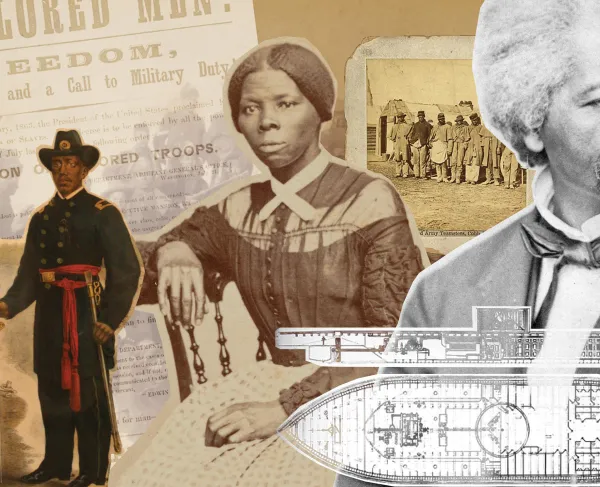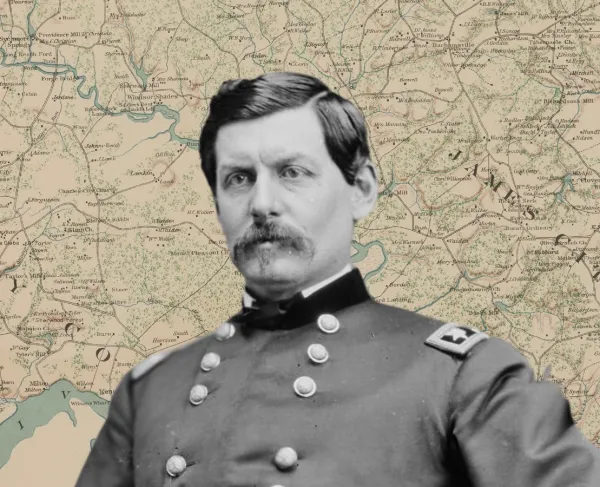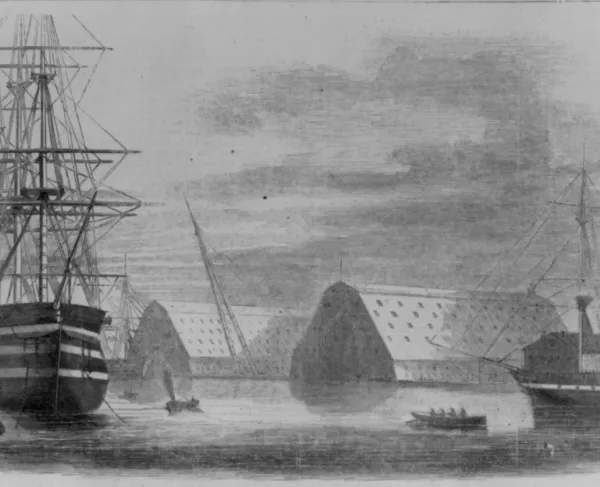Clash of the Ironclads
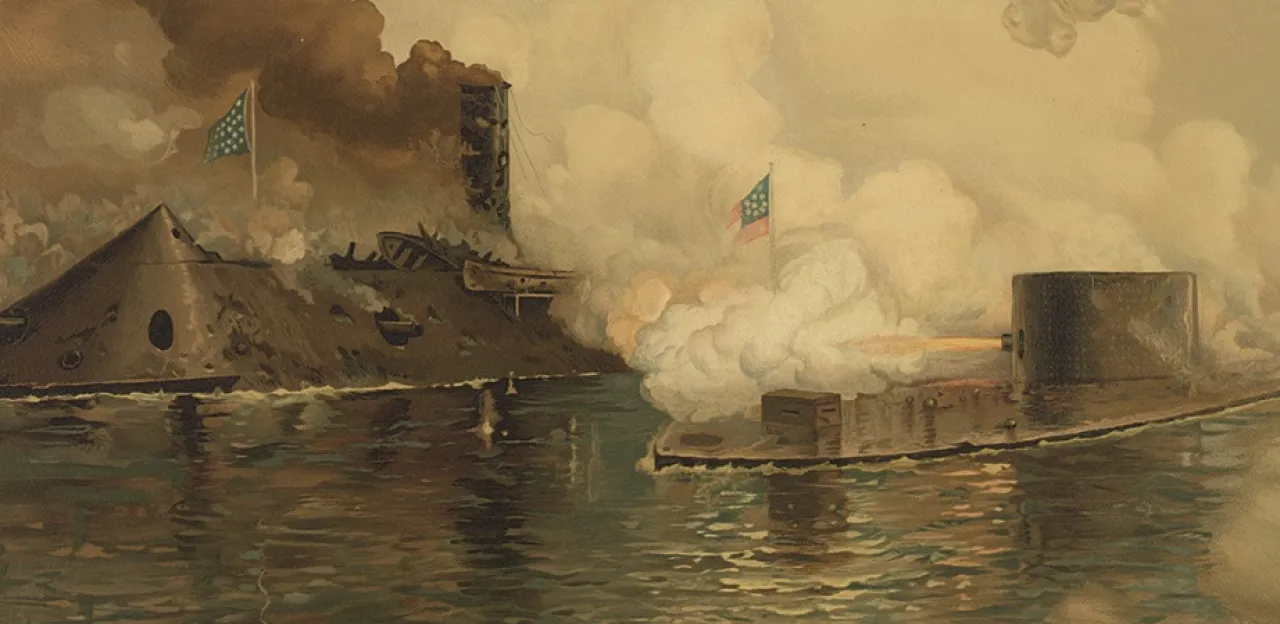
The USS Monitor and CSS Virginia were not the world's first ironclad ships, but their epic clash at Hampton Roads on March 9, 1862, marked a major turning point in naval warfare. When they met near the mouth of the Chesapeake Bay, Union iron-plated gunboats had already been plying the waters of Western Theater rivers for some weeks. But no two such ships had ever faced each other in combat.
The two vessels each featured innovative design characteristics. Virginia, (built on the hull of the USS Merrimack, which had been burned and scuttled when the Union navy abandoned the Norfolk Navy Yard in April 1861), was larger and mounted a total of 10 stationary guns, plus a 1,500-pound iron ram on its bow. Nearly 100 feet shorter and with only a quarter of the displacement, Monitor was more maneuverable, an attribute augmented by the flexibility of the two guns in her rotating turret.
Seeking to interdict Federal naval operations in Hampton Roads, Virginia left its berth at Norfolk under the command of Flag Officer Franklin Buchanan on March 8, 1862. Around 2:00 p.m., Virginia struck the USS Cumberland with its ram, smashing a huge hole in the other ship's wooden hull. Despite the mortal blow delivered to the Cumberland, Virginia became entangled in wreckage and was at risk of being carried down. The ironclad was able to dislodge itself from the frigate's side, but in doing so the lethal ram broke free.
With one opponent vanquished, Virginia turned its sights on the nearby USS Congress, which, having witnessed Cumberland's fate, purposely ran aground. Unable to deliver a ram attack, Virginia maneuvered to pound the frigate with powerful broadsides, forcing Congress to strike its colors. During this time, Buchanan was wounded by musket fire coming from shore. With daylight waning and its captain needing medical attention, Virginia broke off its attack.
The next morning, Catesby Jones, now in command of the Virginia, prepared the rebel ironclad for another assault, now against the USS Minnesota. As the Virginia approached the Minnesota, it noticed a strange raft-like vessel defending its quarry and shifted fire to the newcomer, USS Monitor.
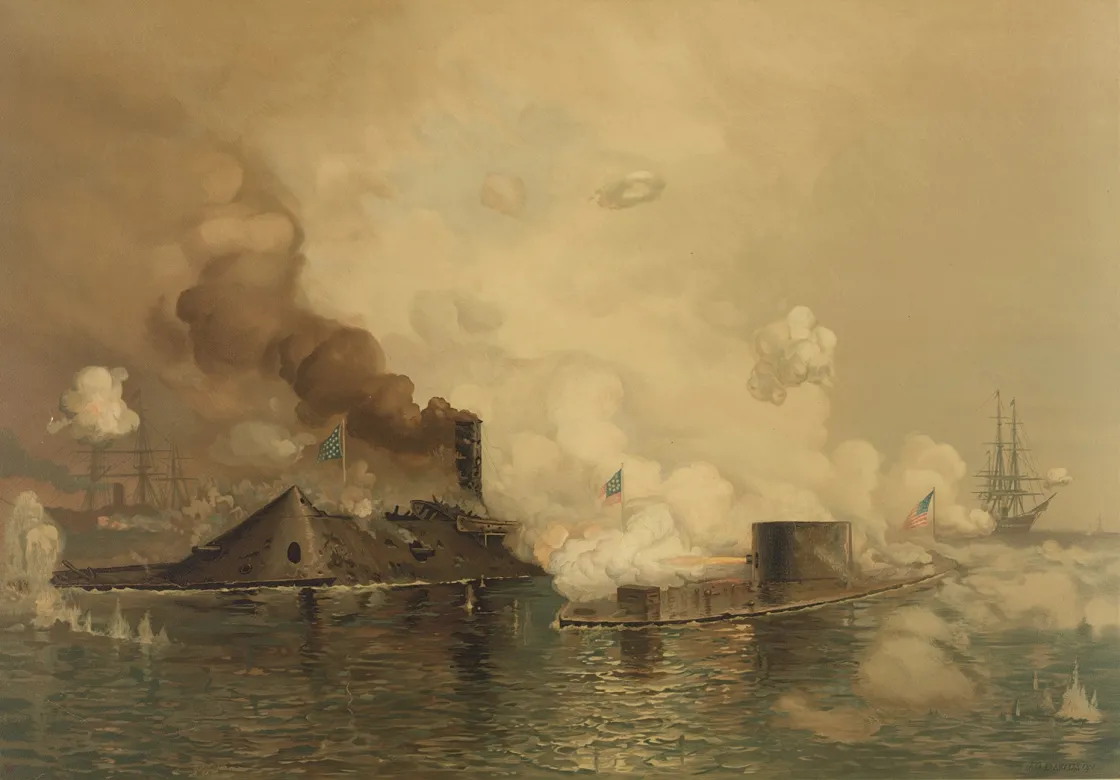
The two ironclads then settled down to a close range slug-fest, both landing hits that took little effect. After several hours of close combat, Monitor disengaged and headed for the safety of shallower waters, its commander temporarily blinded by a shell that exploded near the viewing slit of the pilothouse. Virginia, short on ammunition and conscious of the retreating tide, retired to Norfolk. The first battle between steam-powered, ironclad warships had ended in a draw.
Learn More: 10 Facts: Civil War Navies
